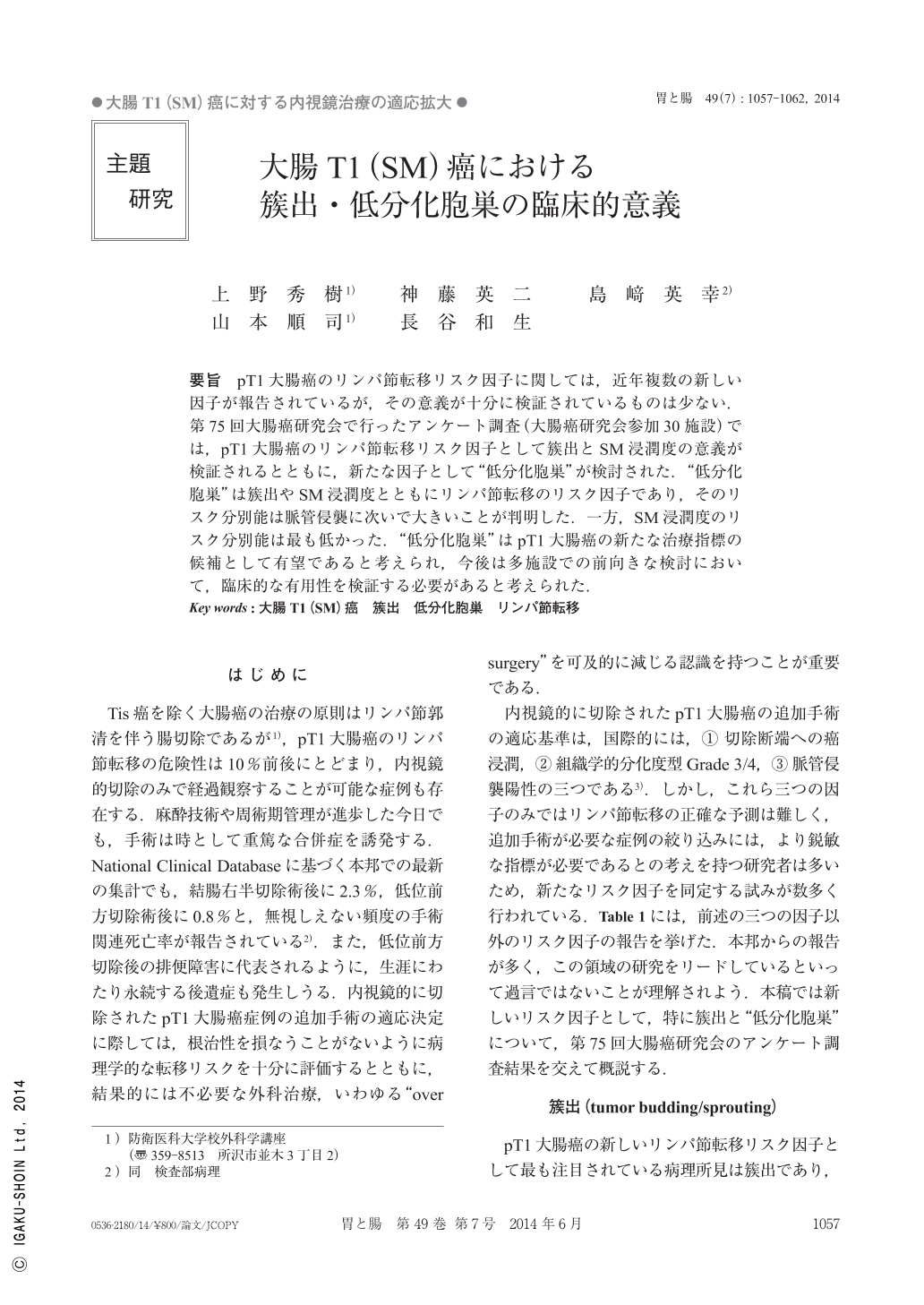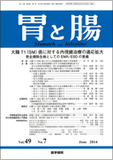Japanese
English
- 有料閲覧
- Abstract 文献概要
- 1ページ目 Look Inside
- 参考文献 Reference
- サイト内被引用 Cited by
要旨 pT1大腸癌のリンパ節転移リスク因子に関しては,近年複数の新しい因子が報告されているが,その意義が十分に検証されているものは少ない.第75回大腸癌研究会で行ったアンケート調査(大腸癌研究会参加30施設)では,pT1大腸癌のリンパ節転移リスク因子として簇出とSM浸潤度の意義が検証されるとともに,新たな因子として“低分化胞巣”が検討された.“低分化胞巣”は簇出やSM浸潤度とともにリンパ節転移のリスク因子であり,そのリスク分別能は脈管侵襲に次いで大きいことが判明した.一方,SM浸潤度のリスク分別能は最も低かった.“低分化胞巣”はpT1大腸癌の新たな治療指標の候補として有望であると考えられ,今後は多施設での前向きな検討において,臨床的な有用性を検証する必要があると考えられた.
Novel risk factors for lymph node metastasis in pT1 CRC(colorectal cancer)have been recently proposed, but most have not been implemented because they have not been validated. Therefore, we evaluated the value of tumor budding, depth of submucosal invasion, and presence of PDC(poorly differentiated clusters)in a multi-institutional cohort of T1 CRC cases recruited from 30 institutions at the 75th meeting of the Japanese Society for Cancer of the Colon and Rectum. We found all three factors to be statistically significant(all, p<0.0001). The predictive power of risk stratification was found to be most favorable for vascular invasion, followed by PDC ; submucosal invasion depth was the most unfavorable. PDC may thus be a promising new parameter to determine whether an observational policy can be safely applied following local tumor excision in pT1 CRC cases. However, large-scale multicenter prospective studies are required to validate the use of PDCs in clinical management and to determine whether it should be included in the diagnostic routine.

Copyright © 2014, Igaku-Shoin Ltd. All rights reserved.


